ʻUala For All
 By Carmela Tafoya
By Carmela Tafoya
Mānoa Valley resident and longtime Mānoa Heritage Center docent and friend, Carmela Tafoya is a self-described ‘uala (sweet potato) enthusiast. Growing up in Atlanta and Albuquerque, Carmela had never enjoyed a purple sweet potato before arriving in Honolulu. A personal trainer by trade, her love for the canoe plant tuber has led her to incorporate her interest by sharing ‘uala with students across the island by giving tours at MHC or presenting at school assemblies. Carmela has even created an activity at Hawai‘i Children and Youth Day (starting in 2011) where she shares about the nutritional benefits of ‘uala and provides children and families with a slip to take home to plant.
Aloha fellow garden enthusiasts!
I am honored to be the docent to write about ‘uala. Before I came here 10 and a half years ago, I had never laid eyes on a purple sweet potato. That came as a huge surprise to the girl from New Mexico via Atlanta. We, of course, know the orange variety in the South. I even remember when I first ate “sweet potato fries”—but they were always orange. Growing up in Albuquerque, I only ever ate them on Thanksgiving (aka “yams”). I’ll never forget my first time eating a plate lunch at the Prince Lot Hula Festival (when it was still at the Prince’s home in Moanalua). It was around 2 weeks after arriving in the Islands and this oddly purple thing was on my plate. I ate it and it was love at first bite. Little did I know what would lie ahead!
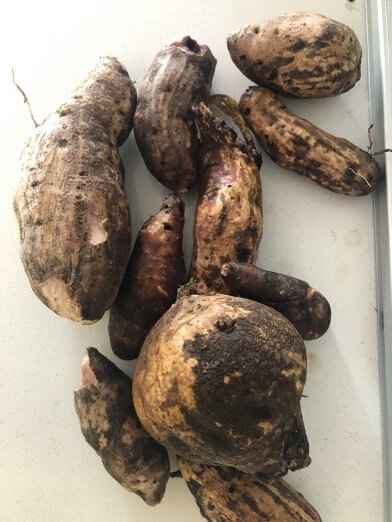
ʻUala from MHC 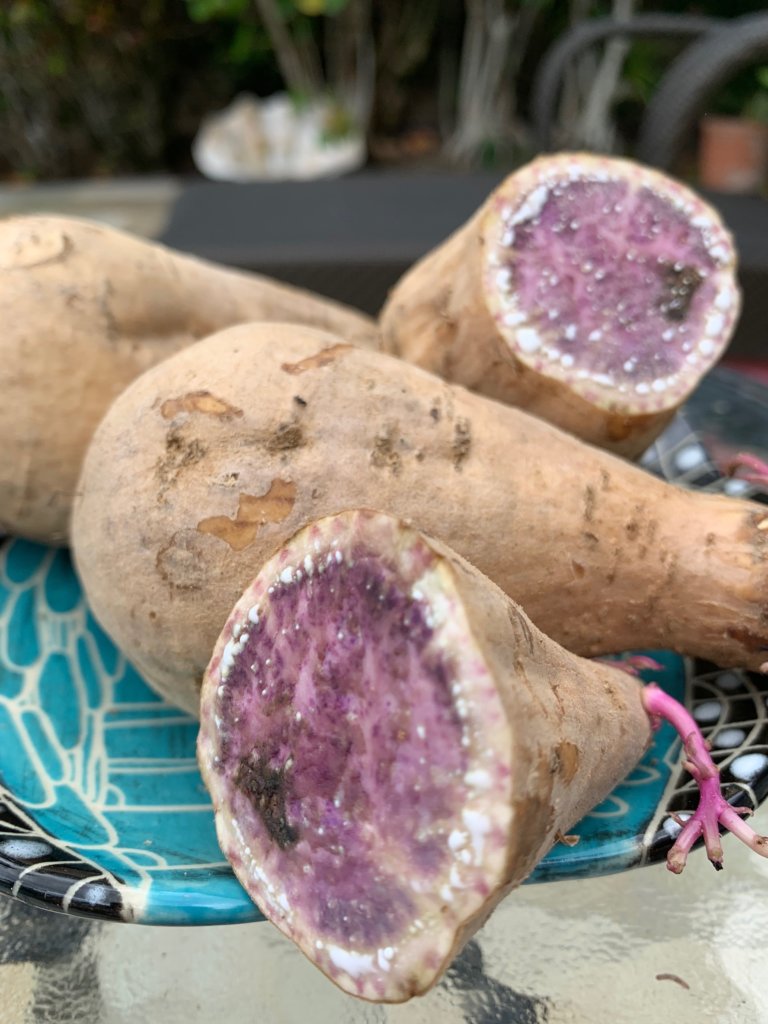
Purple sweet potatoes
At first, I bought them at Safeway, then Costco but, when regular Hilo trips entered the picture, I now buy them at the Hilo Farmers Market at $2 for 2 pounds. Who doesn’t love a bargain and with one free luggage, the only question is what the skycap is thinking! I have since experimented with cooking them – baking, boiling, in a crockpot, and eventually mastering “purple sweet potato fries”! That was until Christmas 2019 when I got a small air fryer. This, my friends, is the ONLY method I’d recommend. The slim purple sticks cook perfectly crisp and evenly, without burning.
Now a greater feat is upon me. Planting and growing my own! Lest I digress, this is my fourth attempt. The first time I wanted to plant them, I was thinking I could buy some seeds. Wrong! Potatoes only grow from “slips,” which I’m confident people from Hawaiʻi and Idaho know. So I googled it and it said to “root” a potato, which I did. I then planted it in a huge outdoor pot and six months later I got a few long skinny ones, LOL. Next, I planted in Hilo twice—once on a flat piece of hill, in a very grassy area. NOTHING. I tried again on the hill after some clearing of the grass, and after a neighbor asked if I planted in the “right” moon, I said, “WHAT?” The third planting in Mānoa grew a huge amount of leaf, but alas no tubers. Now I’m trying for the first time creating a mound for the ‘uala.
I have to be honest, I had time because of Coronavirus to “till the soil” using a metal ʻōʻō (digging stick) weighing 20 pounds (talk about a workout) to loosen the soil 18 to 20 inches from the top of the mound! This time I planted ones that had rooted just a couple of days in the way that MHC’s Native Plant expert, Anthony Ortiz, had taught me. I wanted to make sure I covered all the bases!
As I mentioned, I first learned to propagate the slips with Anthony Ortiz in the garden at Mānoa Heritage Center after becoming a docent in 2010. There is great value in volunteering in the garden (hint, hint). Then, as I led tours, I made it a point with the kids to focus on ‘uala in the Canoe garden. I had the idea to send each student home with a slip from our honored garden. I spoke to them about the best ways to plant, including when and where (even on a lanai) and when to check for harvest. I was sure to remind them to let harvested potatoes sit in the sun for 10 days, to let the sugar come forth.

During a tour I was leading about six years ago, a teacher asked me to bring my love of ‘uala to Hanahau‘oli School. I needed 200 slips which MHC gladly agreed to donate. The whole school learned how to grow ʻuala! But this led me to the idea of “‘Uala For All!,” that all schools would not only plant on school grounds but also encourage students to plant ‘uala at home! Given a natural disaster, who wouldn’t want to go out to their yard for sustenance? Later, I made ‘uala planting one of the activities at the ʻIolani Palace’s Children and Youth Day. It was part of a project I founded called, “Cool Kids Health Secrets,” and hundreds of slips were given to the kids, all donated from our garden!
Now for some history!
ʻUala was brought to Hawaiʻi by Polynesian settlers and it became a cultural staple, second only to kalo. In ancient times there were up to 200 varieties of ʻuala, however, today only a few remain. In addition to being a food source, some varieties of ʻuala were used medicinally (as a tonic to aid lactation during pregnancy and for other ailments such as asthma and sore throats), for ritual practices, and many everyday uses (feeding pigs and catching ʻōpelu, a type of mackerel fish). They also used old vines as leaves as padding under flooring mats such as lau hala. To learn more visit http://www.canoeplants.com/uala.html
Here is one of Carmela’s favorite ʻuala recipes:
Sweet Potato (‘Uala) Chocolate Chip Pancakes
Wet ingredients
- 1/2 cup applesauce
- 1 cup steamed, mashed sweet potato from the garden
- 1 egg
Dry ingredients
- 4 cups coconut flour
- 1 Tbsp baking powder
- 1 tsp salt
- 1 cup dark chocolate chips
Instructions
- Mix wet & dry ingredients separately while heating pan on stovetop, spraying with cooking spray.
- Combine ingredients, add water (or milk) until mixture is the consistency of applesauce. Add chocolate chips.
- Pour into the pan and cook.
- Eat plain or with your choice of toppings and enjoy
Our Executive Director Jessica Welch also shared her family’s favorite Okinawan sweet potato recipe.
Nana’s Okinawan Sweet Potato-Haupia Squares
3 basic parts that must be put together separately: Crust, sweet potato filling, and haupia
For Crust:
- 2 c. flour
- 1 c. butter
- 1/2 c. sugar
Combine ingredients in a food processor, press into 13” x 9” pan. Bake 350 degrees for 15-20 min until light golden brown
For Filling:
3-4 med sweet potatoes (1-1 ¼ lb.)
Bake at 350 degrees until very soft. You may want to do this first as potatoes have to cool to handle and then just pop crust in the hot oven.
Peel potatoes while still warm and add:
- 1/2 c. sugar
- 4 T. butter
- 2 large eggs
- 1 tsp. vanilla
- 1/2 c. milk
Mix well with an electric mixer and smooth over slightly cooled crust. Bake for 20-25 min until the top of the potatoes are slightly firm to touch. Completely cool before adding cooked haupia (also cooled) to top.
For Haupia:
- 4 T. cornstarch
- 4 T. sugar
- 1 c. water
- 1 block thawed coconut milk (found solid in blocks in frozen food dept.)
Dissolve cornstarch and sugar in a cup of water then add coconut milk and slowly bring to a boil, stirring. Once boiling, keep stirring and boil for a minute or more until thickened. Cool in the pot, stirring now and then. Spread over potato and crust (everything fairly cool) and refrigerate until firm.
Share your own favorite sweet potato recipes or growing tips in the comments below!
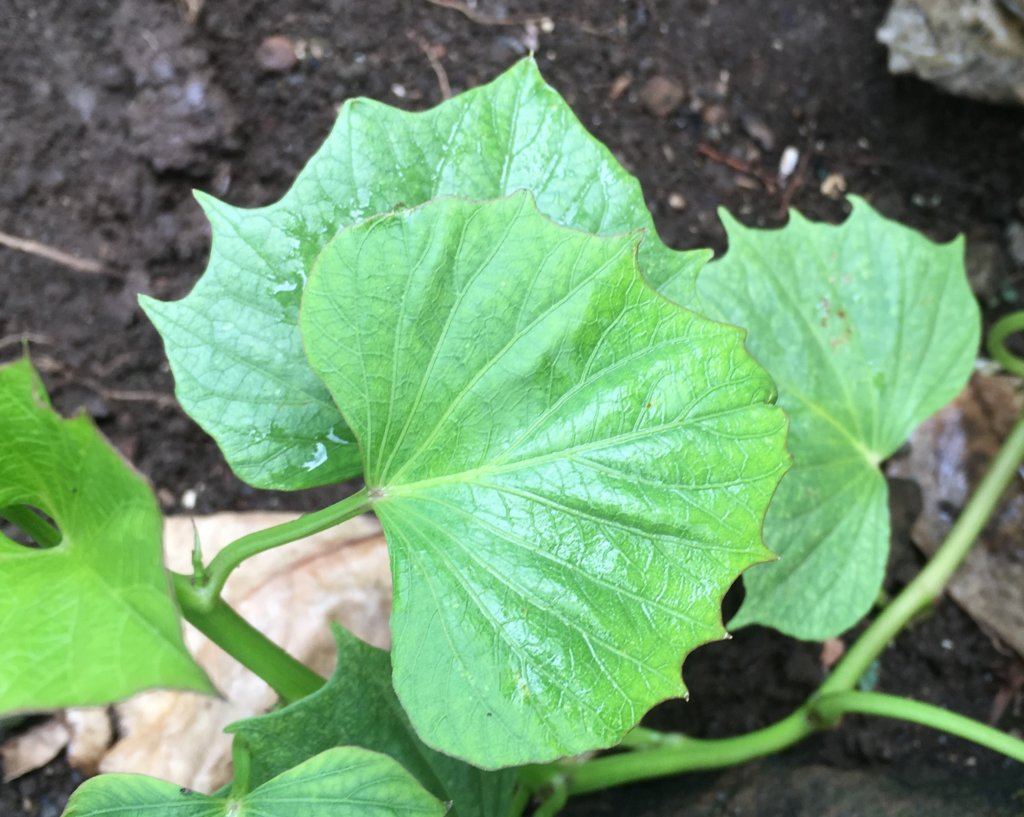
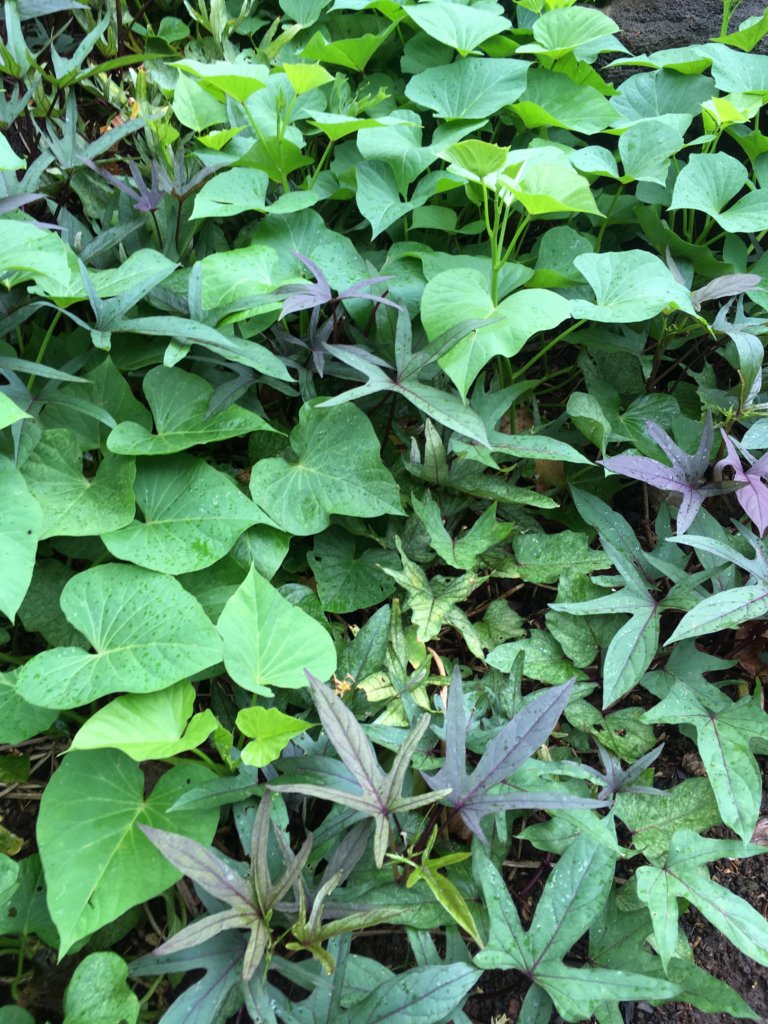

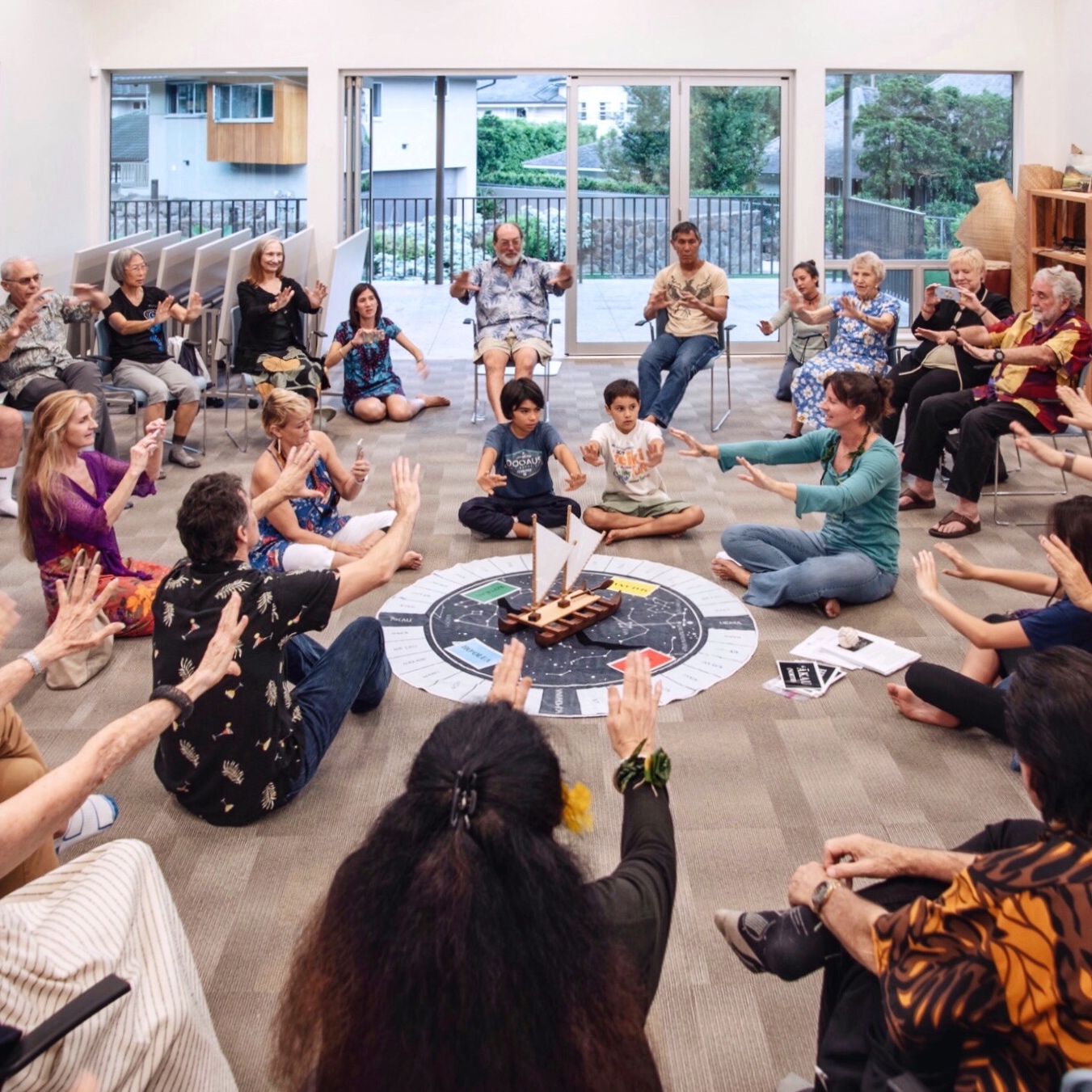
Beautiful article! What air fryer do you use?
My favorite sweet potato recipe is: cook your potatoes (boil is easiest but you can bake or roast), then mash them with plain yogurt, lime juice, and a dash of sambal or other chili pepper, add salt and pepper to taste. Eat hot or cold.